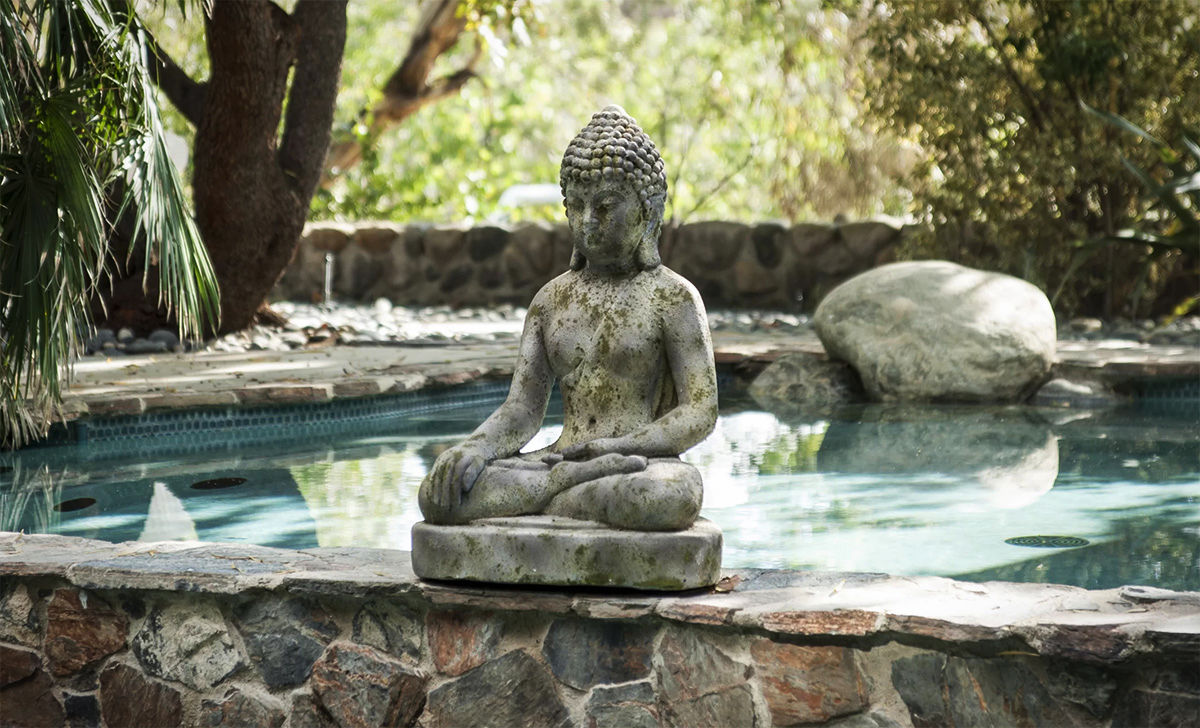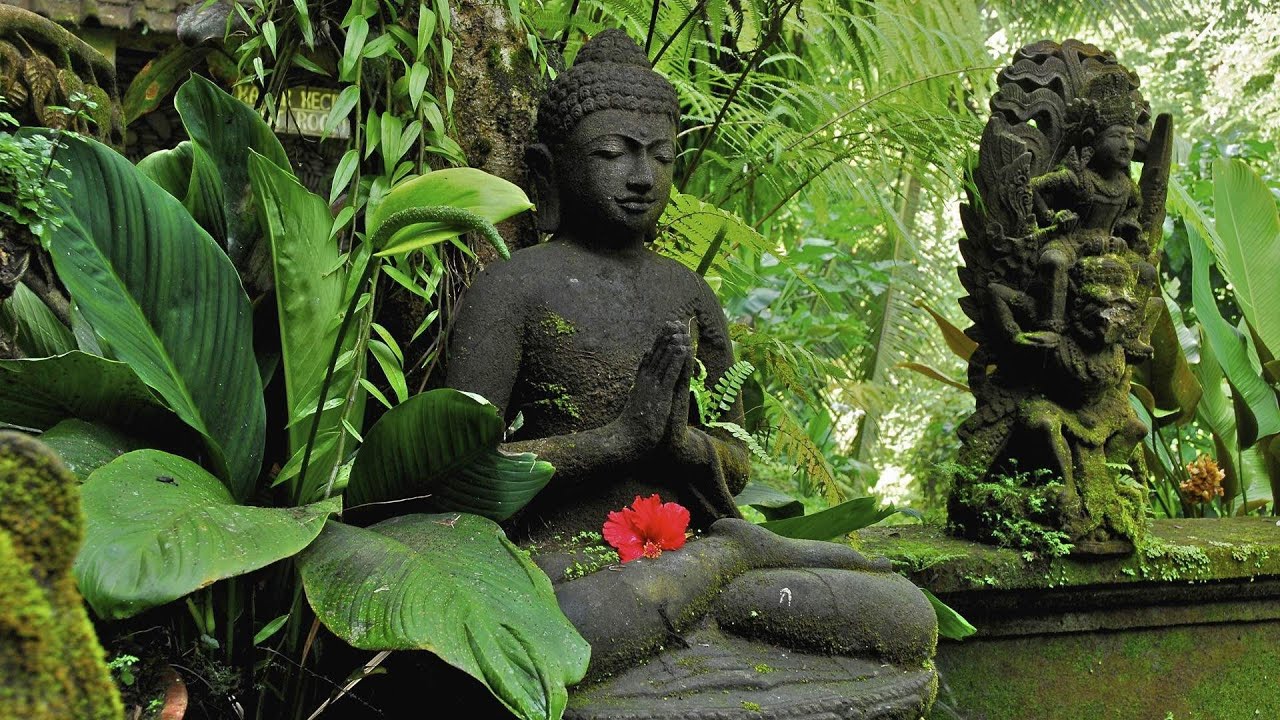Buddha statues offer a captivating glimpse into the spiritual journey of Gautama Buddha, also known as Buddha. These statues, with their unique poses and hand gestures (mudras), hold profound meanings that can be harnessed in various feng shui applications.

Understanding Buddha Statue Symbolism In the world of feng shui, Buddha statues serve as conduits for channeling chi energy and influencing the atmosphere in your home, office, or garden. However, before you embark on a quest to acquire one, it’s essential to grasp the symbolism associated with each statue and its relevance to your intended placement.
Exploring Different Types of Buddha Statues To make an informed choice, consider the diverse array of Buddha statues available, each brimming with its own symbolism and significance.

- Meditation Buddha Statue Meaning: This representation of the Buddha, often referred to as Amitabha or the Buddha of Boundless Light, assumes a seated posture, typically with legs crossed in a double or single lotus pose. His hands rest gently in his lap in the cosmic mudra, a meditation gesture signifying stability. The closed or half-closed eyes signify deep meditation, while the thumb tips touching each other form an oval, symbolizing inward focus. Ideal for a Buddhist home altar, place this statue facing east, as Buddha once meditated upon the rising sun during his quest for enlightenment.
- Laughing Buddha: Often seen as a jovial, pot-bellied figure, the Laughing Buddha, inspired by the merry Buddhist monk Hotei, exudes abundance and good fortune. Depending on the pose and facing direction, it can symbolize welcoming wealth, prosperity, or balance. The widely recognized standing Laughing Buddha, known as “Happy,” is a popular choice in Western culture. Traditionally, rubbing his belly is believed to bring greater luck. Position this statue in your wealth corner or southeast sector for optimal results.
- Laughing Buddha With Children: Depicting the Laughing Buddha with children signifies prosperity, particularly for your family and children. It emphasizes the importance of maintaining balance in life. Place it in the west sector (descendants’ luck) of your home or garden, with the Buddha facing your home.
- Laughing Buddha With Beads or Wealth Ball: A Laughing Buddha adorned with beads or wealth balls embodies meditation and prosperity. The beads represent pearls of wisdom, while the wealth ball symbolizes wealth. Position the Laughing Buddha with beads in the northeast sector (education luck) and the one with a wealth ball in the southeast sector (wealth luck), aligning it with your Sheng Chi (wealth) direction for maximum benefit.
- Laughing Buddha Holding Bowl: This portrayal reflects the life of a monk who depends on alms for sustenance. It signifies the renunciation of material possessions in pursuit of enlightenment. Place this Buddha in your meditation room or any space dedicated to reflection.
- Laughing Buddha With Fan: The Laughing Buddha with a fan statue conveys happiness and protection. Waving a fan in front of the Buddha is believed to dispel troubles, reminding us to savor life’s joys. Position it in your home or business office to eliminate competition and deter ill intentions. For added benefits, place it in the northeast sector (education luck) or southwest sector (love and relationship luck) if it also features a Wu Lou (gourd) and prayer bead necklace.
- Traveling Laughing Buddha Statue: This version, with a cotton sack slung over one shoulder and often holding a wealth ball, signifies blessings and protection during travels. Ideal for those who frequently journey for work, place it in your office’s north sector to enhance your travel experiences and business success.
- Blessing Buddha and Protection Buddha Statue: These statues share the same pose but serve different purposes in feng shui. The upper hand gesture signifies blessings and dispelling fear, while the open hand represents compassion. Use them in your home office, living room, or any space afflicted by weak or negative chi, such as areas affected by unfavorable flying stars.
- Teaching Buddha Pose: Symbolizing wisdom and the fulfillment of destiny, the Teaching Buddha, also known as Dharma Chakra Buddha, typically assumes a sitting pose. His hand gestures convey the teachings of the Wheel of Dharma. Place this statue in the northeast sector (education) to nurture spiritual growth, especially if you are focused on learning and self-improvement.
- Alternate Buddha Teaching Statue Touching Ring Finger: Some Teaching Buddha statues feature the thumb touching the ring finger, signifying good fortune. These can be placed in the north sector (career) or southeast sector (wealth).
- Long Life Buddha Statue Pose: This Buddha, often holding a bag of blessings, a wealth ball, and a Ru-Yi pot, symbolizes health and longevity. Ideal for the east sector (health) of your home or garden, it can also be placed in the west (children, descendants) or southeast (wealth) sectors.
- Happy Home Buddha Statue Pose: The seated Happy Home Buddha, accompanied by a white parasol, is a symbol of protection against life’s challenges. Position it in the southwest sector (love and relationships) to safeguard your marriage or relationship, or in any area where you seek happiness and protection.
- Earth Buddha Statue Pose: Also known as the Calling Earth to Witness, this Buddha sits on the ground with an extended right hand pointing to the earth. It commemorates the Buddha’s resistance to temptation by the demon Mara, leading to his enlightenment. Place it in sectors where you need to strengthen your commitment and resolve, such as the southwest for relationships or the north for career.
- Reclining Buddha Statue: This representation depicts Buddha in a reclining posture, symbolizing the transition from life to death as a mere change of state. Choose this statue for areas undergoing transitions in your life, such as the north for job changes or the southwest for new relationships.
- Medicine Buddha Statue: The Medicine Buddha statue represents health and healing, often featuring a bowl filled with medicinal herbs. Place it in the east sector (health luck) to enhance well-being and safeguard your health.
Respect for Buddha Statues While Buddha heads are often used as home décor, it’s essential to remember that to Buddhists, Buddha is a religious figure deserving of respect. Decapitated Buddha heads, sometimes found in commercial décor, can be considered offensive. It’s crucial to treat Buddha statues with reverence and avoid placing them directly on the ground or in bathrooms. In bedrooms, store them in cabinets with closed doors when not used for meditation. Buddha statues should face into a room unless placed at the entrance, where they should welcome those who enter.
Selecting the Right Material Matching the material of your Buddha statue to the sector’s ruling element can amplify its feng shui effects:
- Wood element: Opt for carved wooden statues to activate wood elements in the east, southeast, or to fuel the fire element in the south.
- Metal element: Bronze or copper statues are ideal for the west, northwest, or north sectors, as metal produces water in the productive cycle.
- Earth element: Choose clay or crystal Buddhas for the northeast, southwest, and center of your home to activate the earth element.
Choose Wisely for Your Home and Garden Buddha statues can enhance your personal directions and revitalize stagnant areas of your life when placed thoughtfully. Understanding their symbolism empowers you to harness the chi energy they attract effectively.

